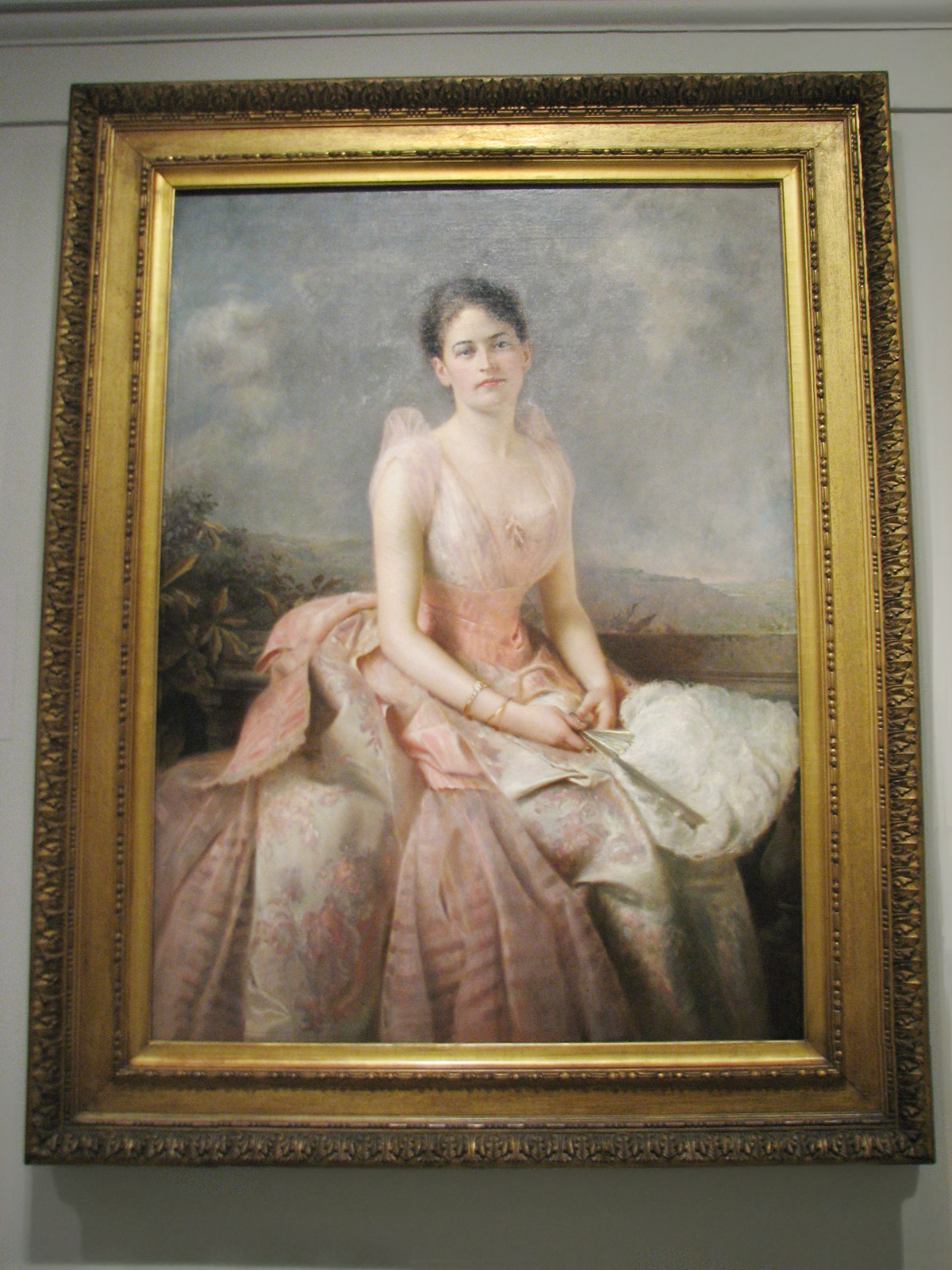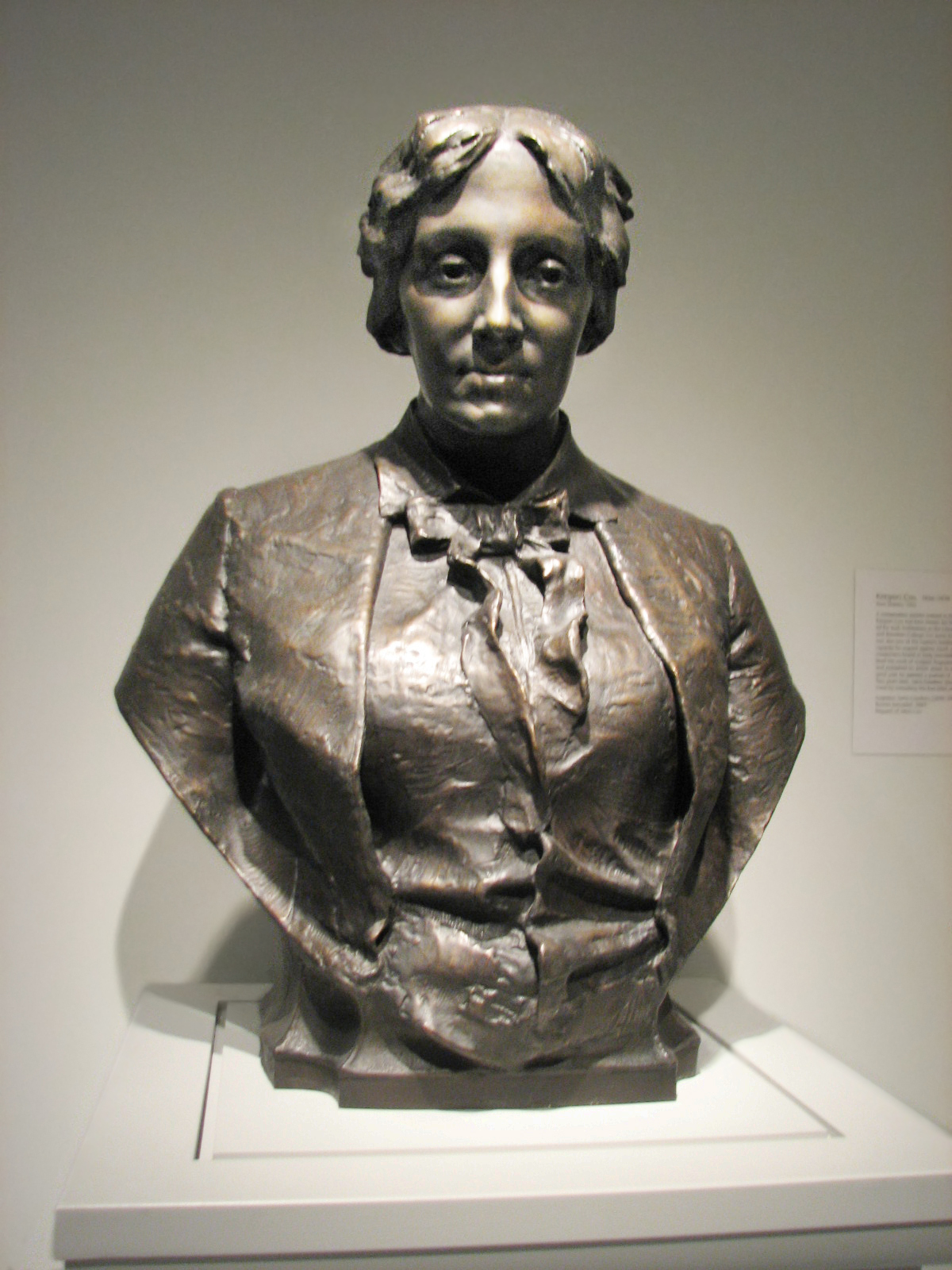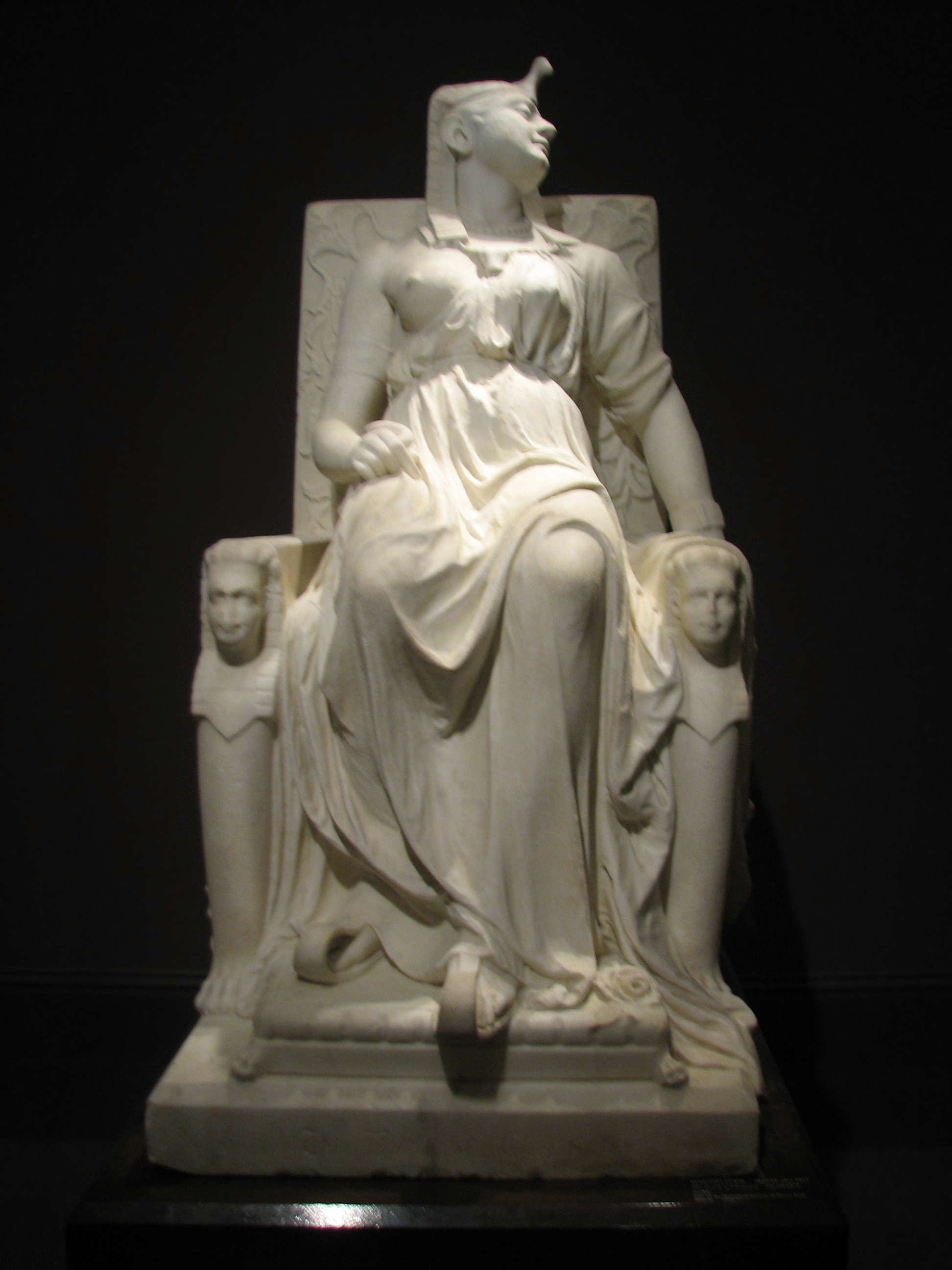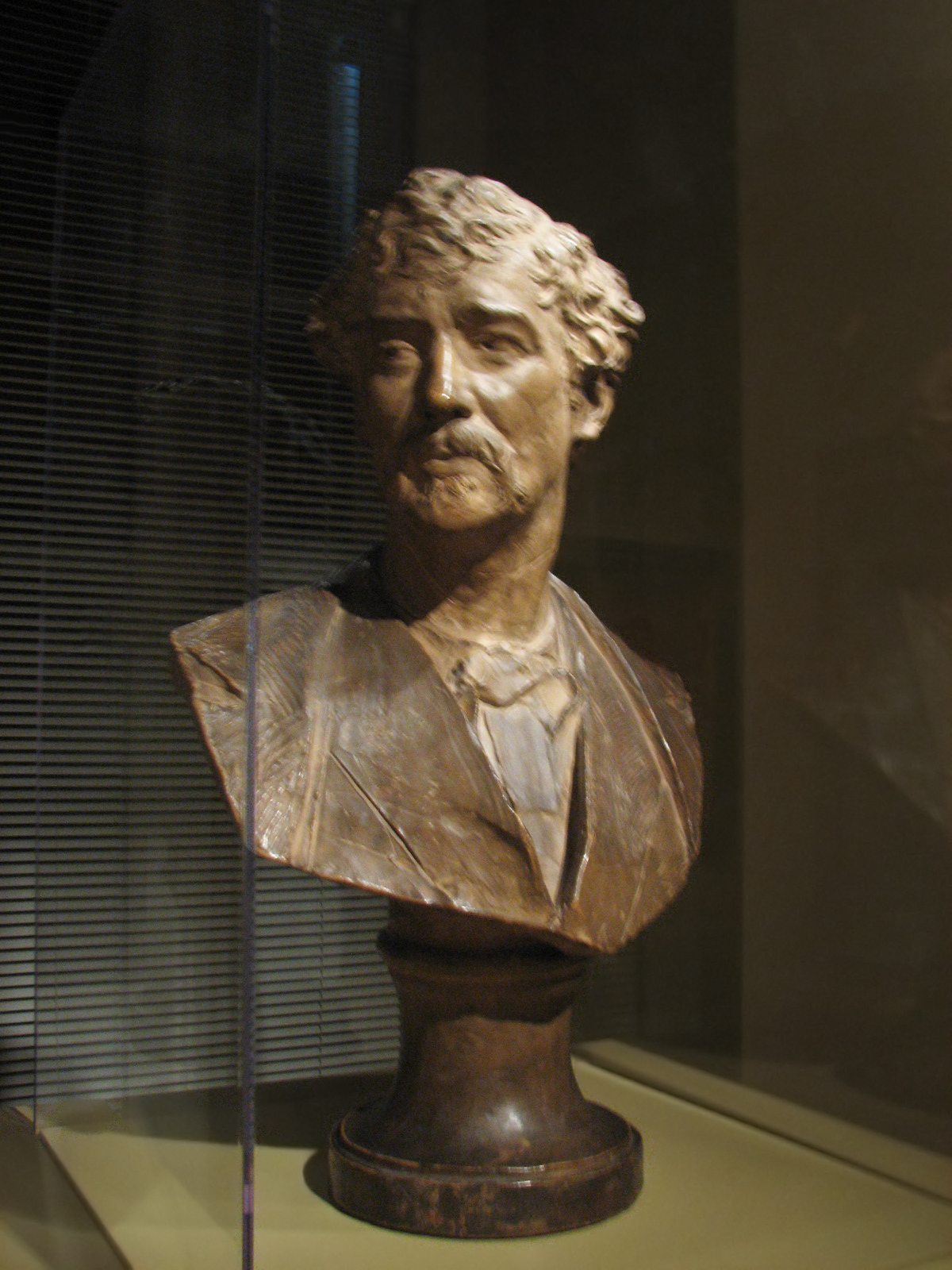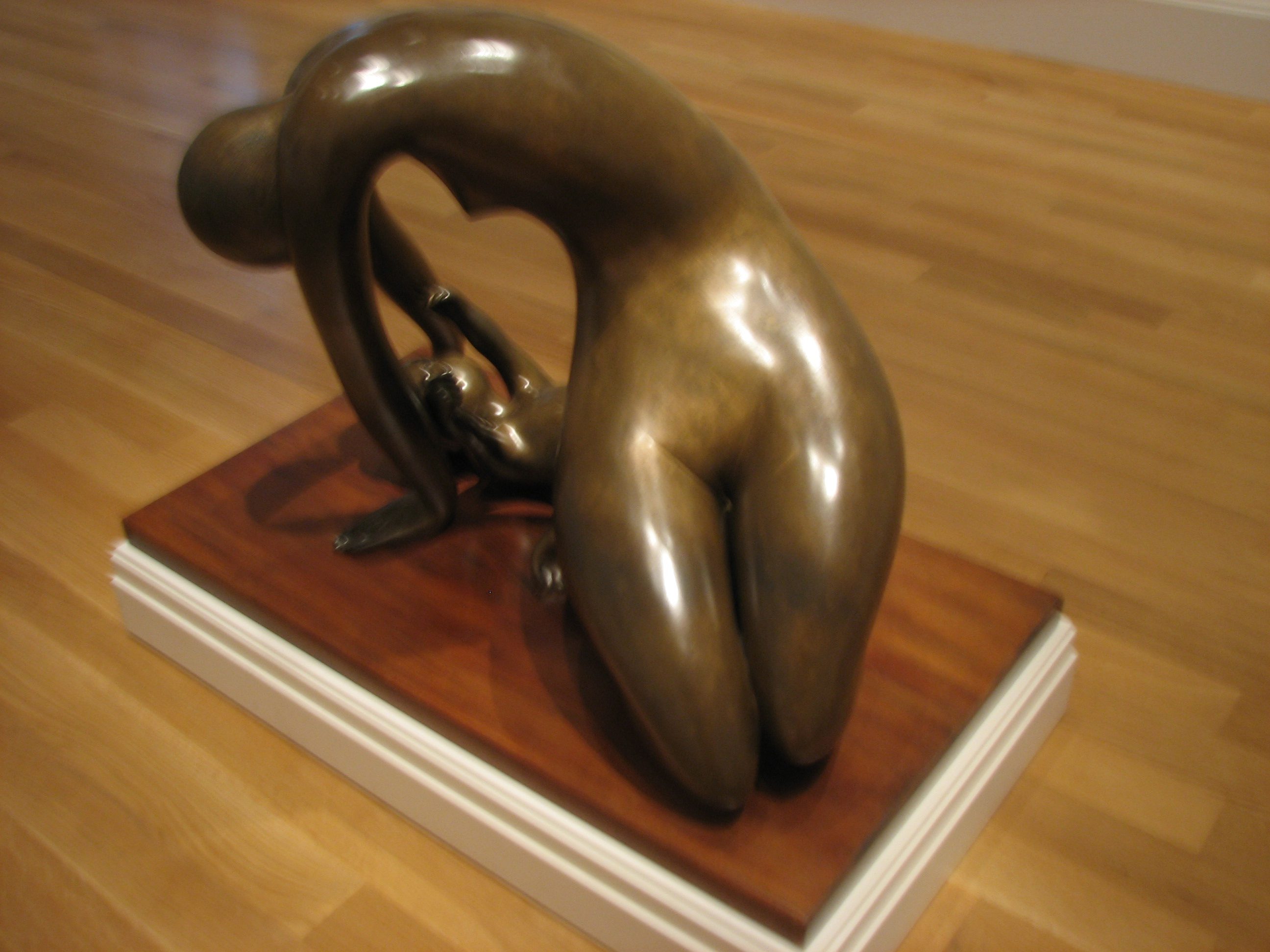
Tuesday, June 18, 2019
Recovered Photos from Smithsonian Museums
2:40pm
Let's not forget these lovely things I saw:
"Juliette Gordon Low (October 31, 1860 – January 17, 1927) was the founder of Girl Scouts of the USA. Inspired by the work of Lord Baden-Powell, founder of Boy Scouts, Juliette Low joined the Girl Guide movement in England, forming a group of Girl Guides in Great Britain in 1911.
"In 1912 she returned to the United States, and established the first U.S. Girl Guide troop in Savannah, Georgia, that year. In 1915, the United States' Girl Guides became known as the Girl Scouts, and Juliette Gordon Low was the first president. She stayed active until the time of her death."(From Wikipedia)
Next, we have a portrait of another influental American woman:
"Elwell was orphaned at age four and, according to various sources, was adopted by author Louisa May Alcott[3] or grew up under the care of his grandfather, Mr. Farrar."
In any case, there's a close enough relationship as "Elwell received his first instruction in art from May Alcott’s sister, Abigail May Alcott, who also taught noted sculptor Daniel Chester French."(From Wikipedia)
"Louisa May Alcott (November 29, 1832 – March 6, 1888) was an American novelist, short story writer and poet best known as the author of the novel Little Women (1868) and its sequels Little Men (1871) and Jo's Boys (1886).[1] Raised in New England by her transcendentalist parents, Abigail May and Amos Bronson Alcott, she grew up among many of the well-known intellectuals of the day, such as Ralph Waldo Emerson, Nathaniel Hawthorne, Henry David Thoreau, and Henry Wadsworth Longfellow."(From Wikipedia)
Thomas Paine was influential a little earlier in American history:
"Thomas Paine (born Thomas Pain[1]) (February 9, 1737 [O.S. January 29, 1736][Note 1] – June 8, 1809) was an English-born American political activist, philosopher, political theorist, and revolutionary. One of the Founding Fathers of the United States, he authored the two most influential pamphlets at the start of the American Revolution and inspired the patriots in 1776 to declare independence from Great Britain.[2] His ideas reflected Enlightenment-era ideals of transnational human rights.[3] Historian Saul K. Padover described him as "a corsetmaker by trade, a journalist by profession, and a propagandist by inclination".[4] Born in Thetford in the English county of Norfolk, Paine migrated to the British American colonies in 1774 with the help of Benjamin Franklin, arriving just in time to participate in the American Revolution." (From Wikipedia)
Artists wanted to see America's first president in a heroic light, and styled him after a Roman emperor:
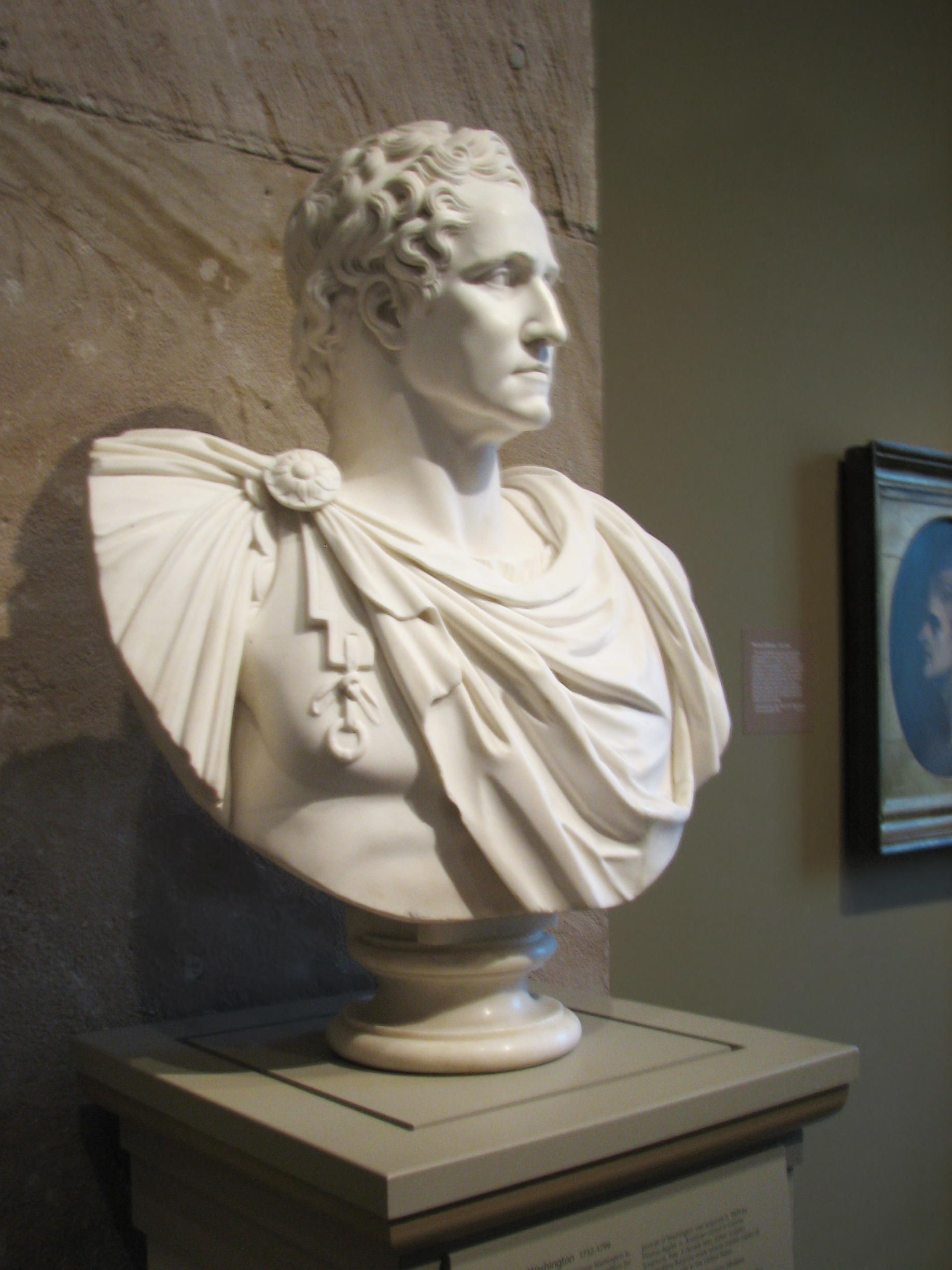 George Washington, c. 1819 copy after 1792 original Massimiliano Ravenna, copy after Giuseppe Ceracchi, 4 Jul 1751 - 31 Jan 1801 Marble, 69.5cm (27 3/8") National Portrait Gallery, Smithsonian Institution, NPG.70.4 Wikipedia has another view of this sculpture |
Cleopatra was an ancient ruler whose depictions have often taken on a mythic quality. In some ways this depiction has more of a realistic quality:
(From museum website)
"Cleopatra (69 - 30 BCE), the legendary queen of Egypt from 51 to 30 BCE, is often best known for her dramatic suicide, allegedly from the fatal bite of a poisonous snake. Here, Edmonia Lewis portrayed Cleopatra in the moment after her death, wearing her royal attire, in majestic repose on a throne. The identical sphinx heads flanking the throne represent the twins she bore with Roman general Marc Antony, while the hieroglyphics on the side have no meaning. Lewis was working at a time when Neoclassicism was a popular artistic style that favored classical, Biblical, or literary themes—thus Cleopatra was a common subject.
"Unlike her contemporaries who often depicted an idealized Cleopatra merely contemplating suicide, Lewis showed the queen’s death more realistically, after the asp’s venom had taken hold—an attribute viewed as “ghastly” and “absolutely repellant” in its day (William J. Clark, Great American Sculpture, 1878). Despite this, the piece was first exhibited to great acclaim at the Centennial Exhibition in Philadelphia in 1876 and critics raved that it was the most impressive American sculpture in the show. Not long after its debut, however, Death of Cleopatra was presumed lost for almost a century—appearing at a Chicago saloon, marking a horse’s grave at a suburban racetrack, and eventually reappearing at a salvage yard in the 1980s. In 1985 the statue was given to the Historical Society of Forest Park, which in turn donated it to the Smithsonian American Art Museum in 1994."
Exhibition Label:
An innovative painter, designer, and printmaker, James McNeill Whistler frequently identified his landscapes and portraits as "symphonies," "nocturnes," and "arrangements," demonstrating his interest in atmosphere, color, and line. Though often neglected in his native United States, Whistler was lionized by the avant-garde of Europe, and his most productive years were spent in London and Paris. The artist's wit and self-fashioning further heightened his celebrity.
Joseph Edgar Boehm sculpted this bust in 1872, the year in which Whistler exhibited his now-famous Arrangement in Grey and Black: Portrait of the Artist's Mother at the Royal Academy in London.
Frieseke "was an American Impressionist painter who spent most of his life as an expatriate in France. An influential member of the Giverny art colony, his paintings often concentrated on various effects of dappled sunlight. He is especially known for painting female subjects, both indoors and out." (Source: Wikipedia)
 One and Another, 1934 Hugo Robus, Cleveland, Ohio 1885 - January 14, 1964 New City, New York Bronze on wood base, overall: 28 3/4 x 43 7/8 x 23 3/8 in. (73.0 x 111.5 x 59.4 cm.), Gift of the Sara Roby Foundation to Smithsonian American Art Museum, SAAM 1986.6.72
|
